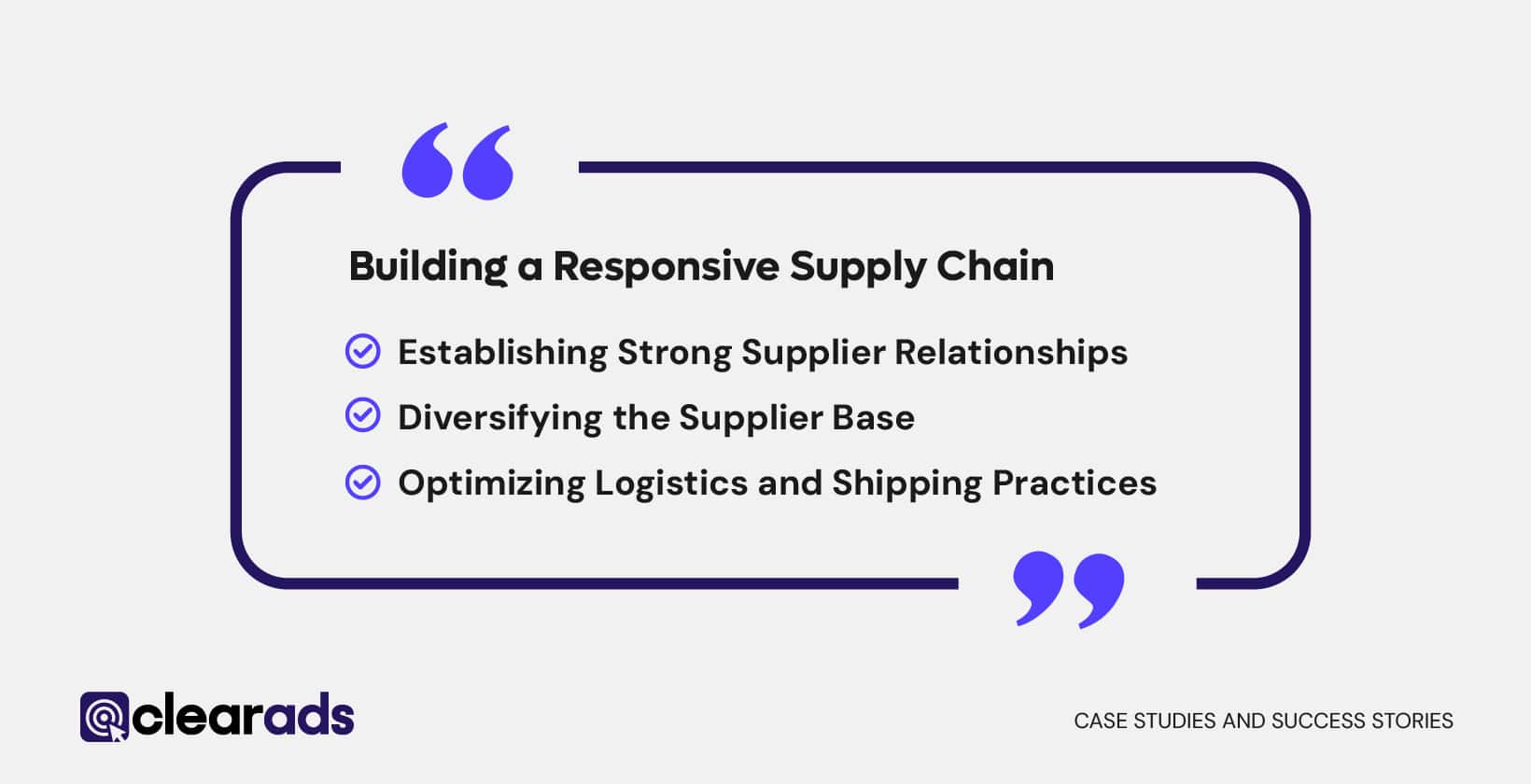An area that will significantly impact a seller’s success on Amazon is inventory management. Effective inventory management involves strategic planning, forecasting, and optimization to ensure the right products are available at the right time. By adopting these strategies, sellers can improve stock control, enhance sales performance, and achieve greater customer satisfaction.
Amazon’s Inventory Performance Index (IPI) is a numerical representation of your skill at managing your inventory on Amazon’s platform. The fulfillment options available on Amazon are FBA, FBM, both FBA and FBA, onsite, or Multi-channel fulfillment. Demand forecasting is the process of predicting future sales outcomes based on historical data and is crucial for inventory management. Striking a balance between having enough stock to meet customer demand and not having excess stock sitting idly in the warehouse is pivotal to successful inventory management. Harnessing data analytics for inventory management has evolved from a competitive advantage to a business necessity. An automated inventory management system can track stock levels in real-time, trigger automatic reordering based on predetermined stock thresholds, and issue alerts for low-stock or fast-moving items. A well-organized and responsive supply chain is a cornerstone of successful inventory management and overall business performance. For brands expanding beyond Amazon to other marketplaces or their e-commerce platforms, Inventory Management for Diverse Marketplaces is crucial for maintaining efficiency and ensuring a cohesive customer experience across all channels.
Understanding Amazon's Inventory Performance Index (IPI)
 Amazon’s Inventory Performance Index (IPI) is a numerical representation of your skill at managing your inventory on Amazon’s platform. Used by Amazon to gauge your inventory performance, this score determines your storage limits and eligibility for various Amazon fulfillment features. Understanding and improving your IPI can lead to several benefits, including increased storage space, reduced fees, and better product visibility, all of which can significantly impact your overall sales and profits.
Amazon’s Inventory Performance Index (IPI) is a numerical representation of your skill at managing your inventory on Amazon’s platform. Used by Amazon to gauge your inventory performance, this score determines your storage limits and eligibility for various Amazon fulfillment features. Understanding and improving your IPI can lead to several benefits, including increased storage space, reduced fees, and better product visibility, all of which can significantly impact your overall sales and profits.
The IPI score ranges from 0 to 1000, with a higher score indicating more efficient and effective inventory management. Amazon calculates this score based on several factors including excess inventory percentage, in-stock inventory percentage, stranded inventory percentage, and sell-through rate (units sold and shipped over the past 90 days divided by the average number of units available at fulfillment centers).
Efficient inventory management ensures an effective cash flow, decreases holding costs, improves customer satisfaction, and ultimately, enhances profitability.
How to optimize your IPI:
- Regular Review of the Inventory Dashboard: Amazon provides an Inventory Dashboard that gives an overview of your inventory health. Regularly monitoring this dashboard will help you identify potential issues that may affect your IPI score, such as excess stock or slow-moving items.
- Managing Excess or Slow-moving Stock: Every item in your inventory costs money to store, and slow-selling products will erode profitability. Amazon flags items stored in fulfillment centers for more than 365 days as “aged inventory”. To prevent buildup, consider strategies such as price reductions, running promotions, or even removing the product from your inventory.
- Maintaining Stock of Best-selling Items: While it’s important to reduce slow-moving items, it’s equally vital to keep your best-selling products in stock. Stock-outs not only lead to lost sales but also reduce customer satisfaction and can negatively affect your IPI score. Forecast demand accurately to ensure optimal stocking levels of best-sellers.
- Regular Inventory Reconciliation: Inventory discrepancies may occur due to factors such as misplaced, damaged, or lost items, or due to returns. Regularly reconciling your inventory helps maintain accurate stock levels, which in turn, positively impacts your IPI score.
- Accurate Record Keeping: Maintaining accurate records of your inventory contributes to an efficient supply chain, which Amazon rewards with a higher IPI score. Accurate records allow for better forecasting, prevent overselling, and assist in identifying trends and patterns that can better inform business decisions.
Leveraging Amazon's Fulfillment Options
 The fulfillment options available on Amazon are FBA, FBM, both FBA and FBA, onsite, or Multi-channel fulfillment.
The fulfillment options available on Amazon are FBA, FBM, both FBA and FBA, onsite, or Multi-channel fulfillment.
Fulfillment by Amazon (FBA): Fulfillment by Amazon allows sellers to entrust their entire logistics process to Amazon. Under FBA, sellers store their products in Amazon’s fulfillment centers, where Amazon takes care of storage, packing, shipping, customer service, and even returns. This allows businesses to tap into Amazon’s world-class logistics network, freeing up their time to focus more on business growth.
FBA products are eligible for Amazon Prime, which can significantly boost product visibility and attractiveness on the platform due to faster delivery times. As a result, FBA can be a highly valuable option for sellers aiming to scale their business quickly, without incurring the hassle and cost of managing a comprehensive delivery and customer service system.
Fulfillment by Merchant (FBM): On the opposite end of the spectrum is Fulfillment by Merchant, in which sellers handle storage, packing, shipping, and customer service. This method offers more control over the inventory, packaging, and shipping processes but comes with the responsibility of fulfilling orders promptly and maintaining high service standards.
FBM can be particularly beneficial for sellers with products that have lower turnover rates or unique shipping requirements that might not be optimally handled under Amazon’s standardized FBA system. FBM also allows sellers to leverage their existing logistics infrastructure, or to use other fulfillment options like third-party logistics providers.
Balancing FBA and FBM: While FBA and FBM each have their advantages, often the best strategy involves using a mix of both. This balance allows sellers to optimize their fulfillment strategy based on product type, seasonality, and shipping costs. For example, high-volume, lightweight items might be best suited to FBA due to Amazon’s competitive shipping rates and access to Prime customers. Conversely, slow-moving, bulky, or highly specialized items might be more cost-effective and manageable under FBM.
FBA Onsite: Fulfillment by Amazon Onsite, is an extension of Amazon’s FBA program that offers sellers greater control and efficiency in managing their inventory and order fulfillment. Unlike traditional FBA, where sellers store their products in Amazon warehouses, FBA Onsite allows sellers to store their inventory at their location(s). Amazon handles the pickup and delivery of inventory, as well as order fulfillment and customer service, but products are not stored in Amazon fulfillment centers. This model reduces storage fees, and inbound shipping costs, and simplifies inventory management for sellers. Additionally, FBA Onsite provides access to Amazon Prime and other services, making it an attractive option for sellers looking to streamline their operations and improve customer service.
Multi-Channel Fulfilment: MCF, or Multi-Channel Fulfillment, is a service offered by Amazon as part of its Fulfillment by Amazon (FBA) program. With MCF, sellers can send their inventory directly to an Amazon fulfillment center. When customers make purchases on the seller’s website or other third-party sales channels, Amazon receives the orders and handles the picking, packing, and shipping directly to the customers. This means that sellers can fulfill orders from multiple sales channels using their existing FBA inventory, streamlining the fulfillment process and ensuring timely delivery to customers regardless of where they make their purchases.
Demand Forecasting and Stock Optimization
 Demand forecasting is the process of predicting future sales outcomes based on historical data. Other forecasting metrics include average inventory, market research, trend projection, econometrics, regression analysis, time series analysis, competitor behavior, safety stock, past sales, seasonality, and consumer trends. By predicting demand accurately, sellers can optimize their stock levels, ensuring they can meet customer demand promptly without being burdened by overstocking.
Demand forecasting is the process of predicting future sales outcomes based on historical data. Other forecasting metrics include average inventory, market research, trend projection, econometrics, regression analysis, time series analysis, competitor behavior, safety stock, past sales, seasonality, and consumer trends. By predicting demand accurately, sellers can optimize their stock levels, ensuring they can meet customer demand promptly without being burdened by overstocking.
Implementing sophisticated tools and techniques can significantly enhance the accuracy of your forecasting. Time-series analysis, machine learning models, and inventory management software are some solutions that can help create accurate demand forecasts. Additionally, adopting a just-in-time (JIT) inventory approach can bring substantial benefits. Under JIT, stock is replenished only as it’s needed, reducing holding costs and minimizing the risk of stock obsolescence.
The Problem With Stockouts and Overstocking
Addressing the issues of stockouts and overstocking is crucial for Inventory management. Stockouts can result in lost sales and diminish customer satisfaction, while overstock consumes unnecessary capital and space. To mitigate these, it’s effective to gather precise data, employ inventory management systems, calculate reorder points, align with consumer demand, and collaborate with logistics experts.
A robust replenishment strategy, triggered by specific stock levels or lead times, along with an inventory health dashboard for real-time insights, supports proactive decision-making. Regular review and adjustment of inventory practices help balance stock levels, ensuring efficiency and customer satisfaction.
Harnessing Data Analytics for Inventory Management
Analyzing inventory data will uncover trends, identify inefficiencies, and highlight opportunities to optimize stock levels. Key metrics to monitor include sales velocity (the rate at which inventory sells), turnover rate (the number of times inventory is sold or used in a specific period), and sell-through rate (percentage of units sold versus the number received).
Inventory management software that integrates with your Amazon account can automate the process of collecting and analyzing these data points. This can lead to more accurate demand forecasts, data-driven decisions, and opportunities for inventory optimization.
Continuous Improvement and Innovation
To stay competitive, sellers on and off Amazon need a mindset of continuous improvement and adaptability.
- Regularly assess your inventory management processes and seek feedback from your team and customers.
- Stay informed about industry trends, advancements in technology, and new methodologies in inventory management.
- By fostering a culture of innovation and flexibility, you can continuously refine your strategies and respond effectively to market changes.
Remember, there is no one-size-fits-all solution to inventory management. Continuously evaluate your strategies, stay open to innovation, and remain adaptable to the ever-changing dynamics of the Amazon marketplace. With the right approach and tools, you can transform your inventory management into a powerful driver of success in your Amazon enterprise.
In conclusion, effective inventory management is crucial for any enterprise seller on Amazon. By optimizing their Inventory Performance Index (IPI) score, leveraging Amazon’s fulfillment options, accurately forecasting demand, and utilizing data analytics, sellers can achieve efficient inventory management and improved sales performance.
Reducing Stockouts and Overstock
 Sellers need to strike a balance between having enough stock to meet customer demand and not having excess stock sitting idly in the warehouse. This balance comes with experience as it takes time to understand one’s customer base, but it is pivotal to successful inventory management. Overstock will tie up capital and lead to storage issues, while stockouts will result in lost sales and dissatisfied customers. Therefore, measures to minimize both situations are vital.
Sellers need to strike a balance between having enough stock to meet customer demand and not having excess stock sitting idly in the warehouse. This balance comes with experience as it takes time to understand one’s customer base, but it is pivotal to successful inventory management. Overstock will tie up capital and lead to storage issues, while stockouts will result in lost sales and dissatisfied customers. Therefore, measures to minimize both situations are vital.
How to Prevent Stockouts
To prevent stockouts, focus on improving inventory forecasting, keeping accurate inventory records, and enhancing supply chain management. Focusing on these elements of inventory management will ensure product availability, maintain sales, improve customer satisfaction, and protect the brand’s reputation.
Sellers should set up and monitor reorder points, which is the specific stock level at which a new order should be placed to replenish stock before it runs out. Sellers need to calculate these reorder points accurately, considering factors such as lead time, safety stock, and the average demand for each product. This will ensure proficient inventory management.
Predictive analytics tools using machine learning and AI can analyze historical sales data and forecast when stock levels are projected to fall below the reorder points. This allows sellers to place timely orders to restock, thereby avoiding stockouts.
How to Avoid Overstocking
Avoiding overstock necessitates a deep understanding of your products’ sales velocity, meaning how quickly items sell within a particular timeframe. Low-velocity items may not need to be heavily stocked, especially if they’re not seasonal or if the demand is not high.
8 tips to avoid overstocking:
- Inventory Management Software: This is your digital assistant for keeping track of everything from sales to stock levels in real-time. It’s a game-changer for making informed decisions quickly and avoiding the dreaded overstock.
- Get Smart with Forecasting: Leverage your sales history to predict future trends. This isn’t just about looking at numbers; it’s about understanding how seasons, trends, and consumer behaviors can impact what you sell.
- Know Your Demand: Understanding demand is more than knowing your bestsellers; it’s about recognizing how different factors can change what your customers want.
- Keep Your Inventory Info Spot-On: Regular checks and balances ensure your stock data is accurate. This way, you’re never caught off guard by sudden overorders or shortages.
- Nail Your Reorder Points: It’s all about timing. Calculating the perfect moment to reorder can save you from both shortages and surplus stock, keeping that inventory balance just right.
- Centralize Your Data: A single source of truth for all your inventory and sales data makes decision-making simpler and more effective. It’s like having a bird’s eye view of your entire operation.
- Set Clear Inventory Levels: Define the minimum and maximum levels for your products. This framework helps guide your purchasing decisions and ensures you’re always within the sweet spot of stock levels.
- Keep an Eye on Market Trends: Staying ahead of market trends and adapting your inventory accordingly means you’re always ready to meet your customers’ evolving needs.
Partner with a 3PL Provider: These logistics experts can offer valuable insights and help streamline your supply chain. It’s like having a logistics guru by your side, helping you avoid overstocking pitfalls.
Harnessing Data Analytics for Inventory Management
 The three integral elements of data analysis for inventory management are Inventory Analytics, Predictive Insights with AI, and Data Quality and Integration.
The three integral elements of data analysis for inventory management are Inventory Analytics, Predictive Insights with AI, and Data Quality and Integration.
Analyzing the wealth of data gathered from numerous touchpoints, Amazon sellers will find actionable insights, optimize inventory levels, and drive business growth. Using data analysis as a method for inventory management has evolved from a competitive advantage to a business necessity.
Inventory Analytics
Inventory analytics involves the systematic analysis of sales and stock data to reveal patterns and anomalies. For instance, tracking regular fluctuations in sales can help identify seasonal trends, while sudden spikes or drops in sales might indicate exceptional events that demand further investigation.
Key Performance Indicators (KPIs) such as turnover rate (the number of times inventory is sold or used in a specific period), carrying costs (the cost of holding inventory during a certain timeframe), and order accuracy (the degree to which orders are fulfilled correctly) should be monitored regularly. These metrics offer valuable insights into the health of your inventory and the effectiveness of your operational strategies.
Predictive Insights with AI
AI algorithms will sift through vast amounts of data to identify emerging trends, optimize pricing strategies based on market patterns, and predict future sales with a high degree of accuracy. This allows sellers to anticipate market changes, align their inventory strategies proactively, and stay ahead of the competition.
Data Quality and Integration
The effectiveness of data analytics hinges on the quality of your data. It’s crucial to ensure your data is accurate, comprehensive, and updated regularly to provide a reliable basis for analysis and decision-making. Missing, outdated, or incorrect data can lead to misguided insights and potentially costly mistakes.
Integrating your Amazon sales data with your inventory management system can provide a holistic and real-time view of your operations. This allows you to assess how changes in sales reflect on your inventory levels instantaneously and make strategic inventory decisions promptly.
Integrating Technology and Automation
 An automated inventory management system can track stock levels in real-time, trigger automatic reordering based on predetermined stock thresholds, and issue alerts for low-stock or fast-moving items. These systems not only save time and reduce the likelihood of manual errors but also help maintain optimal stock levels, minimize stockouts and overstocks, and improve customer satisfaction.
An automated inventory management system can track stock levels in real-time, trigger automatic reordering based on predetermined stock thresholds, and issue alerts for low-stock or fast-moving items. These systems not only save time and reduce the likelihood of manual errors but also help maintain optimal stock levels, minimize stockouts and overstocks, and improve customer satisfaction.
Integration with Other Tools
Integrating your inventory management system with other business tools can provide a more comprehensive picture of your operations. For instance, integrating with accounting software can streamline financial processes such as tracking sales, costs, and profitability. Integrating with Customer Relationship Management (CRM) platforms can provide insights into the purchasing behavior of your customers, helping you anticipate demand and personalize customer interactions. Integration with e-commerce analytics tools can also help track key performance indicators and generate actionable insights for your business.
This seamless flow of data across systems supports better data-based decision-making and ensures a unified approach to managing your enterprise.
Cloud-Based Inventory Management Solutions
Cloud-based inventory management solutions provide the flexibility to access your inventory data anytime, anywhere, allowing for increased collaboration among team members across different locations. Moreover, cloud-based solutions are highly scalable, meaning they can easily adapt as your business grows, adding new users, products, or sales channels without significant system changes or disruptions.
Cloud solutions also offer real-time data access, meaning you can monitor sales, stock levels, and other key metrics as they happen, supporting more responsive and timely decision-making.
Implementing Automated Inventory Management Systems
Automated inventory management systems track and organize stock, supplies, and sales. An automated system allows retailers to manage inventory in real-time, for timely business decisions. The use of an automated inventory management system will significantly streamline previously manual processes like checking when stock is low.
Such systems will monitor stock levels in real time and alert you when it’s time to reorder or when items are not selling as expected. This provides dynamic inventory control and provides the agility to adjust quickly to changes in demand.
The larger a business becomes, the more difficult it will be to manually check inventory, it becomes a tedious task that wastes valuable time considering there are many tools available. With the increased demand in cross-channel advertising, sellers might use inventory management software that integrates with multiple marketplaces to ensure seamless data exchange and real-time inventory updates.
Inventory management tools are designed to streamline operations and enhance sales performance.
Notable examples include Skubana, known for its robust order and inventory management capabilities: SoStocked, which offers customizable inventory forecasting; and Linnworks, a solution that excels in multi-channel integration. Other tools like Sellbrite, Veeqo, Expandly, Forecastly, and Brightpearl each bring unique strengths, from improving order fulfillment to optimizing stock levels, providing e-commerce businesses with the flexibility to choose a tool that best fits their specific needs.
Using a Third-Party Agency for Inventory Management
Collaborating with a third-party inventory management firm such as ShipBob or Fulfillment by Amazon (FBA) offers more than simple task delegation. These agencies come with advanced technology and expertise to enhance your inventory handling and delivery services. They precisely forecast inventory needs and manage logistics efficiently. This partnership not only allows you to concentrate on growing your business but also reduces the risks associated with inventory mismanagement. Additionally, as your business expands, they offer scalable solutions without the need for immediate heavy investment, thus improving operational efficiency and customer satisfaction.
Hiring a third-party agency for inventory management, such as Intent Group, provides impartiality and professionalism, essential for fair property check-ins and deposit disputes. These services offer detailed inventory reports with photo documentation, which can be amended based on feedback, ensuring accuracy and fairness. Amid COVID-19, they adapted with virtual check-ins and enhanced safety measures. Selecting such a service should prioritize quality and industry knowledge, often found in providers affiliated with recognized organizations. For more
Building a Responsive Supply Chain
 The three main ways to build a responsive and reliable supply chain are to establish strong supplier relationships, diversify the supplier base, and optimize shipping practices. A well-organized and responsive supply chain is a cornerstone of successful inventory management and overall business performance. It ensures the timely and efficient movement of goods from suppliers to your warehouses and ultimately to your customers.
The three main ways to build a responsive and reliable supply chain are to establish strong supplier relationships, diversify the supplier base, and optimize shipping practices. A well-organized and responsive supply chain is a cornerstone of successful inventory management and overall business performance. It ensures the timely and efficient movement of goods from suppliers to your warehouses and ultimately to your customers.
5 methods to building a responsive supply chain:
- Establishing Strong Supplier Relationships: Strong relationships with suppliers ensure a reliable supply chain. This involves regular communication, mutual respect, and a clear understanding of expectations on both sides. By negotiating favorable terms, sellers can ensure reliable lead times, flexible order quantities, and extended payment terms. This increases the responsiveness and flexibility of your supply chain, allowing you to adjust quickly to changes in demand.
- Diversifying the Supplier Base: Relying on a single supplier can expose your business to significant risk in the event of a supply chain disruption. Diversifying the supplier base is an effective strategy to mitigate this risk. Working with multiple suppliers ensures that if one supplier faces difficulties, you can still source your products from the others. This is especially crucial during times of global uncertainty, such as natural disasters, pandemics, or political unrest, when significant disruptions to supply chains can occur.
- Optimizing Logistics and Shipping Practices: The logistics and shipping aspect of your supply chain also plays a crucial role in inventory management. Optimizing these processes can have a significant impact on both your inventory levels and customer satisfaction.
- Explore different shipping methods: Using different methods will identify the most efficient and cost-effective options. This might involve leveraging multiple shipping methods depending on the product type, customer location, and urgency. For example, air freight might be used for high-demand or time-sensitive items, while sea freight might be more cost-effective for bulk, non-perishable items.
- Offer expedited shipping for high-demand or high-value items can enhance the customer experience and justify higher shipping fees. This can also reduce the need for large safety stock levels, as you can restock faster according to demand.
In conclusion, building a responsive supply chain takes strategic planning and continuous optimization. By fostering strong supplier relationships, diversifying your supplier base, and optimizing your logistics and shipping practices, you can create a supply chain that supports effective inventory management, enhances customer satisfaction, and drives the overall success of your Amazon enterprise.
Engaging with Analytics and Customer Feedback
While data analytics provide insights into sales trends and inventory performance, Engaging with Analytics and Customer Feedback offers a more nuanced understanding of your market and customer needs. Regularly review customer feedback and reviews to identify trends, preferences, and areas for improvement.
Customer feedback can reveal issues with product quality, packaging, or shipping times, which directly impact inventory management decisions. Addressing these issues promptly can improve product offerings, more accurate stock levels, and higher customer satisfaction.
Additionally, engaging with social media and online forums can provide real-time insights into customer behavior and market trends. This proactive engagement allows you to adapt your inventory strategy to meet changing customer demands and stay ahead of the competition.
Inventory Management for Diverse Marketplaces
 Expanding beyond your usual Amazon marketplace requires effective inventory management to maintain efficiency and ensure a seamless customer experience across all channels. Implementing a centralized system for real-time tracking, developing channel-specific strategies, leveraging cross-channel analytics, diversifying the supply chain, utilizing dynamic pricing, maintaining a customer-centric approach, and continually adapting to e-commerce changes are key for brands to thrive on multiple platforms.
Expanding beyond your usual Amazon marketplace requires effective inventory management to maintain efficiency and ensure a seamless customer experience across all channels. Implementing a centralized system for real-time tracking, developing channel-specific strategies, leveraging cross-channel analytics, diversifying the supply chain, utilizing dynamic pricing, maintaining a customer-centric approach, and continually adapting to e-commerce changes are key for brands to thrive on multiple platforms.
7 Ways to manage inventory for diverse marketplaces:
- Centralized Inventory Management: Implement a centralized inventory management system that integrates all your sales channels. This unified approach ensures real-time inventory tracking and updates across platforms, preventing stock discrepancies and enabling a consistent customer experience. Centralized systems also provide a holistic view of your inventory, sales, and customer data, making it easier to make informed decisions and streamline operations.
- Channel-Specific Strategies: It’s crucial to understand the unique demands and challenges of each marketplace. Develop channel-specific inventory strategies that cater to the distinct customer base, selling fees, shipping logistics, and return policies of each platform. For example, a high-end fashion retailer might maintain a different stock assortment on their website than on platforms like eBay or Walmart.
- Cross-Channel Analytics: Leverage cross-channel analytics to gain insights into your customers’ purchasing behaviors across different platforms. Analyzing data from various sources can help identify popular products, seasonal trends, and regional preferences, allowing you to optimize inventory allocation and marketing strategies for each channel.
- Supply Chain Diversification: Just as diversifying your sales channels can reduce dependence on a single marketplace, diversifying your supply chain can protect against disruptions. Work with multiple manufacturers, distributors, and logistics providers to ensure a steady supply of products and mitigate risks associated with supply chain volatility.
- Dynamic Pricing and Promotions: Utilize dynamic pricing strategies and promotions across different platforms to manage inventory levels effectively. For example, if you have excess stock of a particular item, consider running a promotion on the platform where it sells best. Dynamic pricing tools can automatically adjust prices based on demand, competition, and inventory levels, helping you optimize sales and reduce overstock.
- Customer-Centric Approach: Regardless of the platform, maintaining a customer-centric approach is key. Ensure that your inventory management decisions always consider customer needs and expectations. Provide accurate stock information, fast shipping, and easy returns to enhance customer satisfaction and loyalty across all sales channels.
- Continual Learning and Adaptation: The e-commerce landscape is continually evolving, with new marketplaces emerging and consumer preferences changing. Stay informed about industry trends, emerging technologies, and new market opportunities. Regularly review and adapt your inventory management practices to stay competitive and meet the changing needs of your customers.
The Future of Inventory Management
The future of e-commerce and inventory management is driven by technological advancements, changing consumer behaviors, and global market trends. For enterprise sellers on Amazon, staying informed, adaptable, and proactive is crucial for long-term success.
As you implement these advanced inventory management techniques, remember that the goal is not just to maintain optimal stock levels but to create a seamless and satisfying customer experience. By focusing on efficiency, responsiveness, and continuous improvement, you can build a robust inventory management system that supports your business growth and enhances your brand reputation.






